Create an amazing home for nature
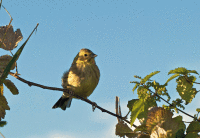
Species in trouble aren't always obscure beetles or rare orchids, but include wildlife we're probably all familiar with; birds like yellowhammers and song thrushes. Insect species, including some ladybirds, bees and butterflies, are declining, hedgehog numbers have been steadily dropping, and studies show that, in sixteen UK counties, one species of plant becomes extinct every year.
In an effort to try and counter these declines, the RSPB launched a major new campaign in 2013 intended to help people create 'Homes for Nature' where they live, work and play. The idea is a simple one; connecting people with wildlife and encouraging them to undertake small tasks, such as putting up a nest box, or growing some wildflowers. But it also stretches to land managers looking for opportunities to create and care for the habitats that are so vital for the wildlife that is in decline.
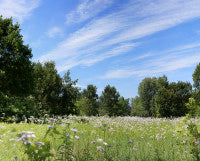
RSPB spokesperson Sarah Woods, said; "Golf courses used to have a bit of a bad reputation in environmental terms. They were often seen as bleak grass monocultures, with an over-dependence on chemical fertilisers and precious little biodiversity. But, on closer inspection, many have features that benefit wildlife. Some support priority habitats like heathland and chalk grassland, and many are working hard to reduce reliance on water."
"More and more, golf course managers are considering wildlife in their plans, putting in native trees, shrubs and flowers and, in some cases, creating, for example, wildflower meadows and reedbeds. Many have also started to reduce their dependence on harmful pesticides and are instead looking to attract pollinating insects like bees and butterflies. And, where there are insects, birds and bats are sure to follow."
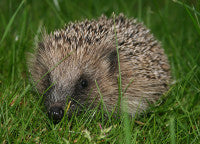
A few courses can even hope to support real rarities, some which even arrive with no encouragement. In 2009, one golf course on Mull hosted a pair of white tailed eagles which nested right next to the fairway. The family, whose two chicks were named pitch and putt, proved extremely popular with visitors and the course became known, for one season anyway, as the one place where an eagle was always guaranteed.
Sarah continued; "For a lot of golfers, wildlife is absolutely an added bonus to playing a round. A recent survey found that 70% of golfers would like to see environmental initiatives at their club, and over half of them specifically preferred to see birds and wildlife whilst playing.
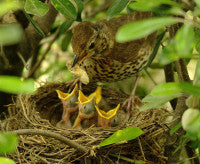
But in addition to providing enjoyment for golfers, courses managed with wildlife in mind can support dwindling species, providing living and feeding areas for hundreds, if not thousands, of small creatures.
Sarah said; "If you look at golf courses across the UK as a whole, there's about 140,000 hectares of out-of-play areas. That's actually about the same size as the area covered by all the RSPB's reserves in the UK. There's so much potential for these spaces to become wildlife havens; some will need work to recreate the heath or wetlands that the wildlife needs, but the rewards are worth it. Sometimes, just reducing the mowing regime can be enough to help flowers set seed and allow skylarks to breed successfully."
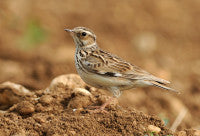
"We've heard lots of inspiring stories from people keen to help and producing some fabulous areas for wildlife. Water features, in particular, can be very successful, proving a home for frogs, toads, ducks, and dragonflies, as well as creating somewhere pleasant for golfers to look at - and to help them get over the disappointment of watching their ball disappear into the deep end!"
"Woodland, copses of trees and hedgerows can provide important food and shelter; meadows and open areas can all support different wildlife; whilst reducing the usage of artificial pesticides and fertilisers, and excessive water use, can all have wider environmental benefits.
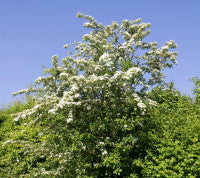
"Often, with habitat management on golf courses, it's just a case of doing a bit less and by working with the grain of nature to produce the best results, which doesn't impose a cost. More ambitious projects will cost more, but golf courses are eligible for grants from the country conservation agencies."
Sarah concludes; "Golf courses can support blocks of trees, old hedgerows, colourful wildflower meadows and open hunting grounds. They have the potential to be an amazing resource for our wildlife, which really is struggling to survive in the modern world. With just a little bit of investigation and thought, golf course managers can create an amazing home for nature. Something their members are sure to approve of."

• Get a copy of 'Birds and golf courses: a guide to habitat management', jointly published by the R&A and RSPB here http://shop.randa.org/index.cfm?action=productdetail&productID=187&deptid=6
• Allow grass to grow and plants like ivy to grow on trees to provide better food, cover and foraging territory for insects, birds and bats
• Remove non-native shrubs and trees and plant native species, such as hazel and hawthorn, to encourage indigenous wildlife to thrive
• Only cut out-of-play grass areas and hedges and shrubs once a year to allow wildflowers, berries and fruits to flourish and attract butterflies and bees
• Reduce the amount of water, pesticides and fertilisers used
• Install nest boxes for birds, frog hotels, hedgehog homes and bat boxes
• Encourage a sense of wildlife stewardship in golf club members so that habitat and its species are valued



